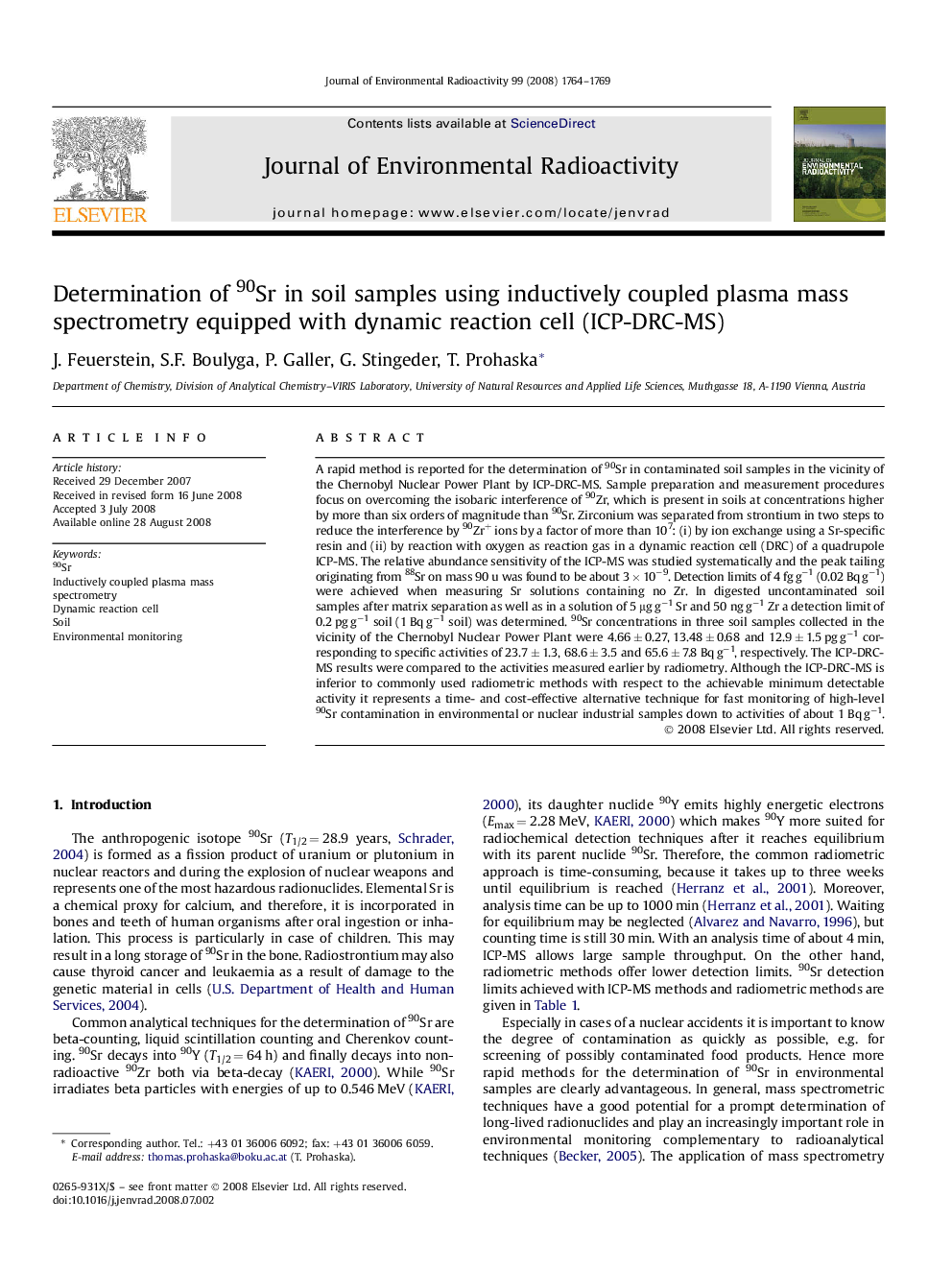| Article ID | Journal | Published Year | Pages | File Type |
|---|---|---|---|---|
| 1739124 | Journal of Environmental Radioactivity | 2008 | 6 Pages |
A rapid method is reported for the determination of 90Sr in contaminated soil samples in the vicinity of the Chernobyl Nuclear Power Plant by ICP-DRC-MS. Sample preparation and measurement procedures focus on overcoming the isobaric interference of 90Zr, which is present in soils at concentrations higher by more than six orders of magnitude than 90Sr. Zirconium was separated from strontium in two steps to reduce the interference by 90Zr+ ions by a factor of more than 107: (i) by ion exchange using a Sr-specific resin and (ii) by reaction with oxygen as reaction gas in a dynamic reaction cell (DRC) of a quadrupole ICP-MS. The relative abundance sensitivity of the ICP-MS was studied systematically and the peak tailing originating from 88Sr on mass 90 u was found to be about 3 × 10−9. Detection limits of 4 fg g−1 (0.02 Bq g−1) were achieved when measuring Sr solutions containing no Zr. In digested uncontaminated soil samples after matrix separation as well as in a solution of 5 μg g−1 Sr and 50 ng g−1 Zr a detection limit of 0.2 pg g−1 soil (1 Bq g−1 soil) was determined. 90Sr concentrations in three soil samples collected in the vicinity of the Chernobyl Nuclear Power Plant were 4.66 ± 0.27, 13.48 ± 0.68 and 12.9 ± 1.5 pg g−1 corresponding to specific activities of 23.7 ± 1.3, 68.6 ± 3.5 and 65.6 ± 7.8 Bq g−1, respectively. The ICP-DRC-MS results were compared to the activities measured earlier by radiometry. Although the ICP-DRC-MS is inferior to commonly used radiometric methods with respect to the achievable minimum detectable activity it represents a time- and cost-effective alternative technique for fast monitoring of high-level 90Sr contamination in environmental or nuclear industrial samples down to activities of about 1 Bq g−1.
